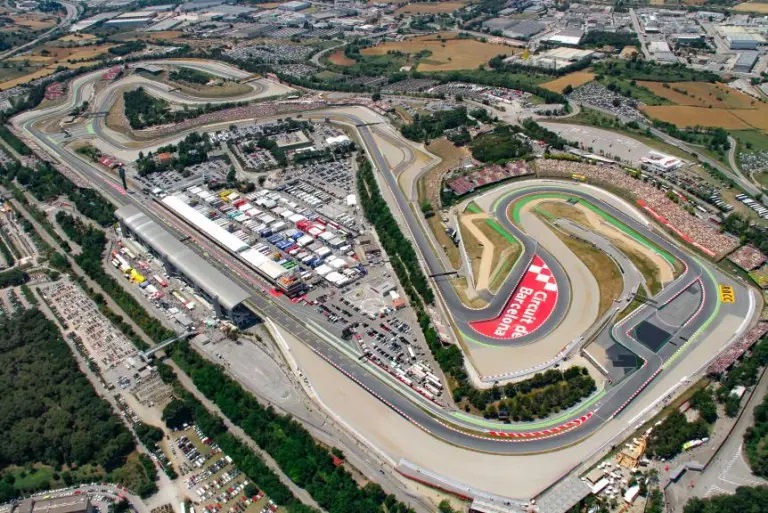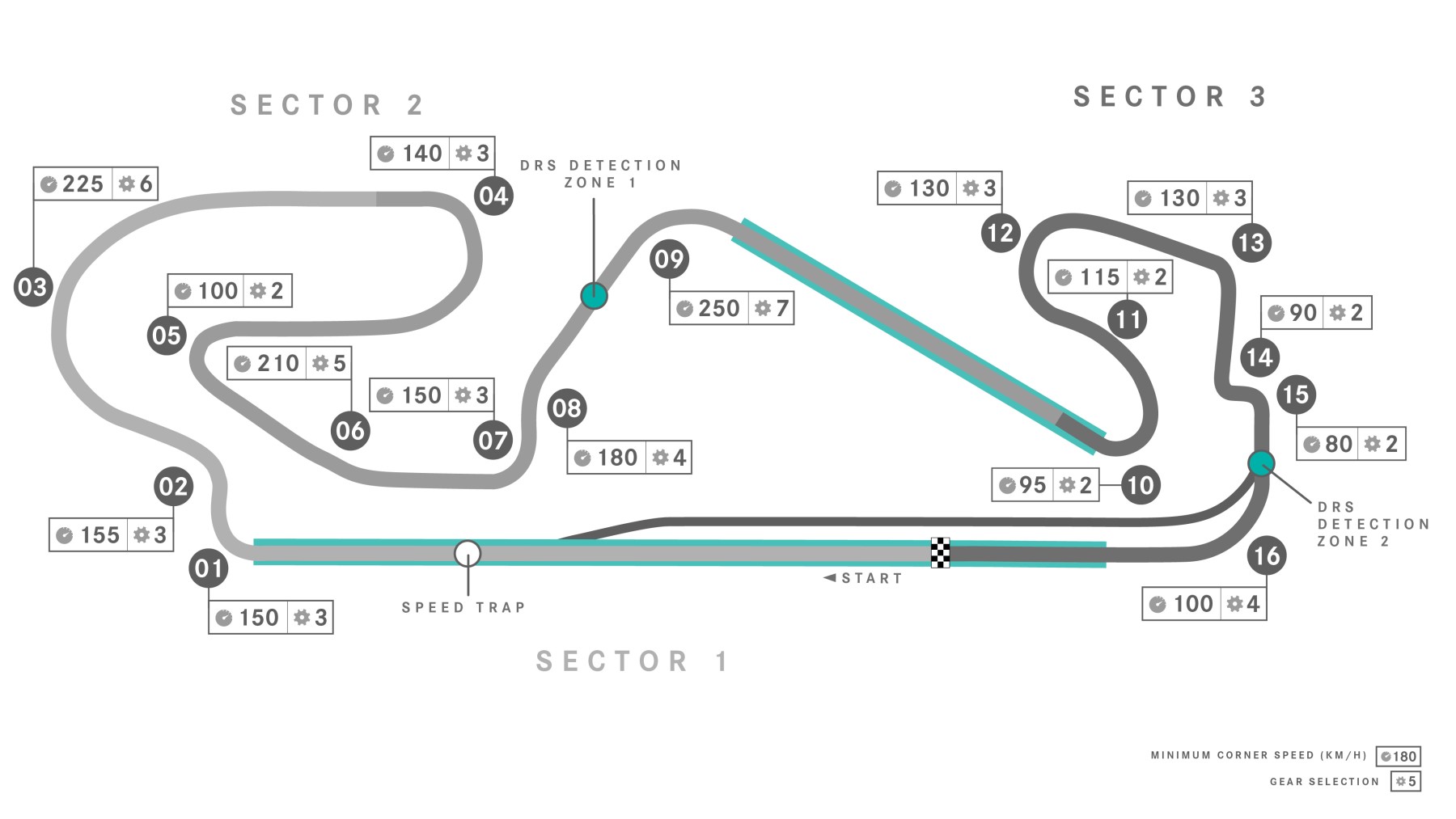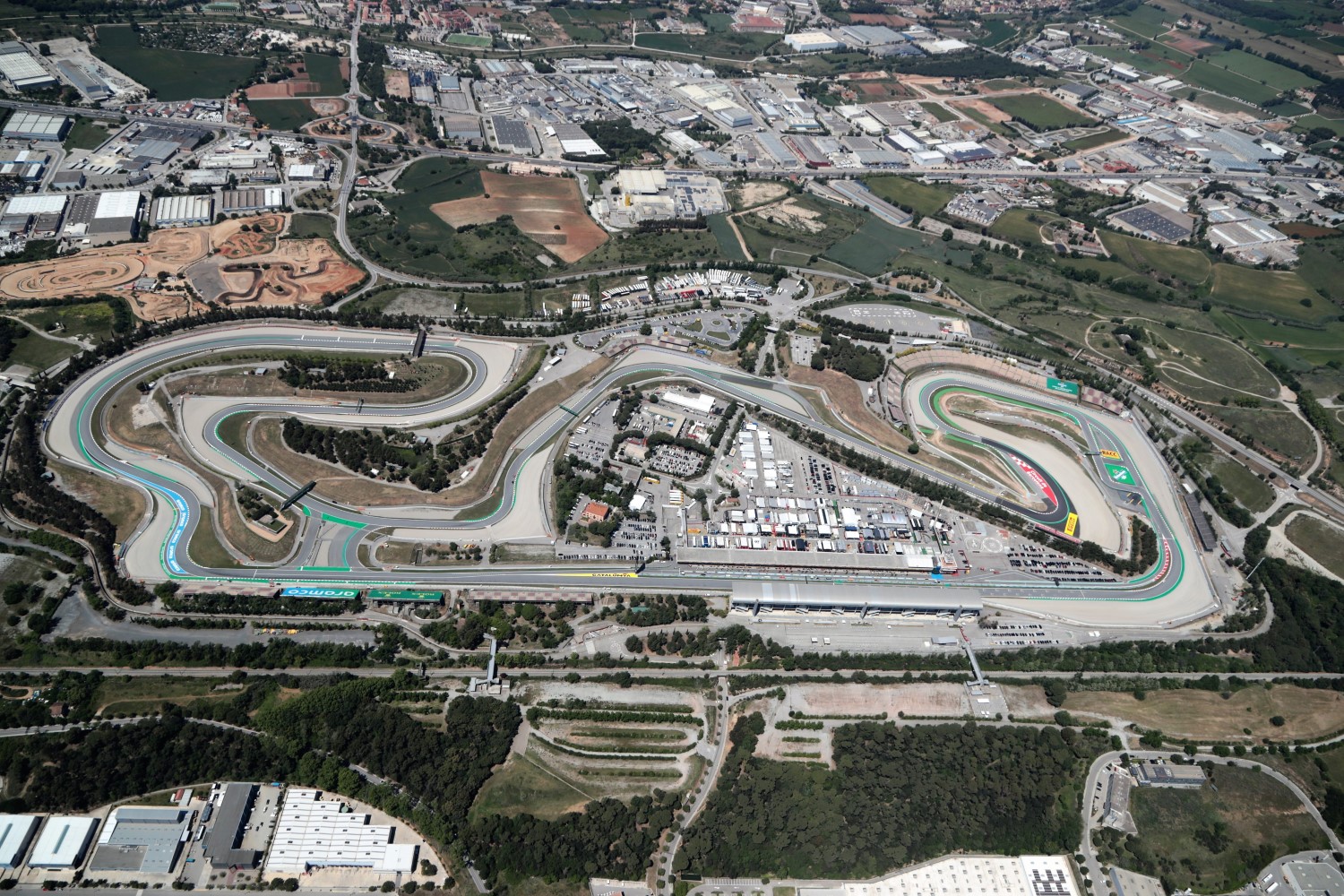F1: Spanish GP Preview
Round 6 of the 2022 FIA Formula 1 World Championship will take the F1 teams to the Circuit de Barcelona-Catalunya for the Spanish Grand Prix.
The Circuit de Barcelona-Catalunya was inaugurated in 1991, ahead of Barcelona hosting the 1992 Summer Olympics, and it has been a mainstay of Formula 1’s calendar ever since. In addition to its 31 years as Spanish Grand Prix host circuit it has also been a regular venue for Formula 1 test days, including earlier in 2022, when it held the opening three- day pre-season shakedown gathering.

The contrast between the new circuit in Miami and the familiarity of the Circuit de Barcelona-Catalunya couldn’t be starker. The drivers and engineers know the quirks and subtleties of this track very well and, while the car balance and tire behavior will be different to February, the teams have a good idea of what to expect and the areas that they will need to work on.
The cars have changed quite a lot since the February pre-season testing at this circuit, and the much hotter track conditions will present very different problems.
The circuit itself features a mix of fast and slow corners, with turn three in particular being a right-hand turn which seems to last forever, which greatly tests the cars’ balance and agility.

The wind direction at the Circuit de Barcelona-Catalunya can change at any-time during the day and can upset the balance of the car due to the major importance of aerodynamics that modern Formula One cars have. It is then a challenge to find a well-balanced setup since cars can suffer massive drag and understeer on one part of the track in the morning session but suffer oversteer at the same section in the afternoon. An allocated tire compound can work well during testing, but not as well a few months later as changeable conditions can provide unexpected performances from some teams during the Grand Prix.
This year, turn ten has been remodeled with the corner being made less tight. The change was made to improve safety for the drivers.
The circuit runs in a clockwise direction and is 4.675km (2.904mi) in length with 16 corners.
The race distance is 308.424km (191.645mi) with 66 laps in total.
Max Verstappen holds the fastest lap record at the track with a 1:18.149 set in his Red Bull Racing Honda-powered RB16B at last year’s event.
Seven-time World Champion’s Michael Schumacher and Lewis Hamilton hold the most victories at the circuit with six each to their respective names.
Scuderia Ferrari is the most successful constructor winning the Spanish Grand Prix 12 times with eight coming from the Circuit de Barcelona-Catalunya.
Weather
We’re looking on course for a dry, bright and warm weekend in Barcelona with sunny skies, dry weather and temps 78 to 80 degrees F.
Tires
Pirelli brings the hardest tires in the 2022 range to the race where it is title sponsor in Spain, with the C1 as the P Zero White hard, C2 as the P Zero Yellow medium, and C3 as the P Zero Red soft. It’s a pretty straightforward choice – which is the same as last year, albeit using a brand-new family of tires – with the demands of the Barcelona circuit being extremely well-known from testing and previous races. These famously include the long Turn 3 as well as Turn 9: all corners that put a lot of energy through the tires.
The teams were at Barcelona as recently as February, three months ago, for pre-season testing. However, there are three big differences to consider: firstly, the teams concentrated on testing compounds in the middle of the range back then rather than the hard; secondly, weather conditions were much cooler; and thirdly, the new cars were in their most basic launch specification. The cars have moved on considerably since then, and it’s going to be interesting to see how much that improvement actually is with the latest upgrades.
With Barcelona being a very well-used circuit, there’s not going to be a huge amount of track evolution expected over the course of the weekend, thanks to a busy schedule of support races too. Temperatures should be dry and warm, adding to the heavy demands placed on the tires. The track itself is unchanged compared to last year, when Turn 10 was modified, slightly increasing the overall length of the circuit.
Last year’s winning strategy was a two-stopper, the traditional approach to Barcelona, with Mercedes driver Lewis Hamilton triumphing from pole using a soft-medium-medium strategy. Soft-medium-soft was used by all the finishers from P2 to P8.
Mario Isola: “It’s hard to say much about Barcelona that hasn’t been said already, as it’s possibly the best-known circuit on the calendar for the drivers, with its wide-ranging layout making it a perfect testing venue. It has a bit of everything, with the very technical final sector being particularly important when it comes to looking after the tires. As a result, the teams will have a good opportunity to assess the progress they have made with their cars since the start of the season, although the weather conditions will be much warmer and there will probably be a lot more running on the hard tire than there was in testing, which will perhaps be the key to the race. In the past, Barcelona has traditionally been a two-stopper, so it will be interesting to see if the new generation of tires this year leads anyone to target a one-stopper.”

Fact File: Spanish Grand Prix
- Overtaking is a challenge in Spain. The pit straight is the only long one and is entered via a high-speed corner, where it is tough for cars to follow due to the dirty air, while the end of the straight isn’t a particularly heavy braking zone either. The modifications to Turn 10 that debuted last year also haven’t helped, as the corner is now taken at a faster speed and requires less braking.
- However, the Spanish GP venue will be a good test of whether these new 2022 technical regulations have made the cars easier to follow each other and better for overtaking. We’ve seen promising signs so far, which may well help drivers to make moves.
- The Circuit de Barcelona-Catalunya is an ideal track for testing an F1 car, as it has a wide range of corner types and speeds, plus some long straights. Slow-speed corners like Turns 14 and 15 focus on mechanical grip, but high-speed sections such as Turns 3 and 9 test a car’s aerodynamic grip.
- Sector three is incredibly important and drivers can find a lot of lap time here in the slow corners. It can be rare for a driver to set three purple sectors at the circuit, because maximizing grip and being faster in sector one will overheat the tires for the crucial third sector.
- Most of the track’s low-speed turns are left-handers and most of the right-handers are taken at high speeds. So slightly different car set-ups can be used on the left and right-hand sides, and that track characteristic also means the left tires wear out quicker, while the right tires experience lower temperatures.
- Turn 5 is one of the track’s more unique corners, because drivers approach the corner differently depending on the session. The camber of the road drops at the apex, which unloads the inside-front tire and increases the risk of lockups. Drivers will take a riskier, tighter line in Qualifying as it shortens the distance, but on a race stint, lockups can cause vibrations and damage the tire, which could prompt an additional pit stop. So, they take a wider line to keep the load off the inside-front and reduce the potential of a lockup.
- The wind at the Circuit de Barcelona-Catalunya often changes direction during the day. Usually, we find there is a tailwind on the main straight in the morning, which produces a headwind into the high-speed turns. This helps provide better car stability. But then it tends to rotate in the opposite direction in the afternoon, giving drivers a tailwind into the fast corners and making the balance trickier.
- 23 of the 31 races that have taken place at the Circuit de Barcelona-Catalunya have been won from pole, proving just how crucial Qualifying is.
- Barcelona tends to be a higher-downforce track in terms of car set-up and wing level, so maximum speeds are towards the lower end of the list.
- It has one of the longest runs from pole to the first braking zone of the season, with 579 meters before drivers hit the brakes for the opening sequence of corners.
- Since we last raced in Barcelona in May 2021, the cars have changed drastically. This means the drivers are tackling corners at different speeds. For example, the long Turn 3 is now taken at 225 km/h, compared to 240 km/h in 2021. The fast Turn 9 is now a 250 km/h right-hander, whereas last year it was taken at around 265 km/h.
- Barcelona was the scene of the first winter test of 2022. The cars have evolved significantly since then, so a lot of our learning and information from that opening test of the season needs to be reinterpreted, to see how it applies to the car we’ll have there this weekend.
